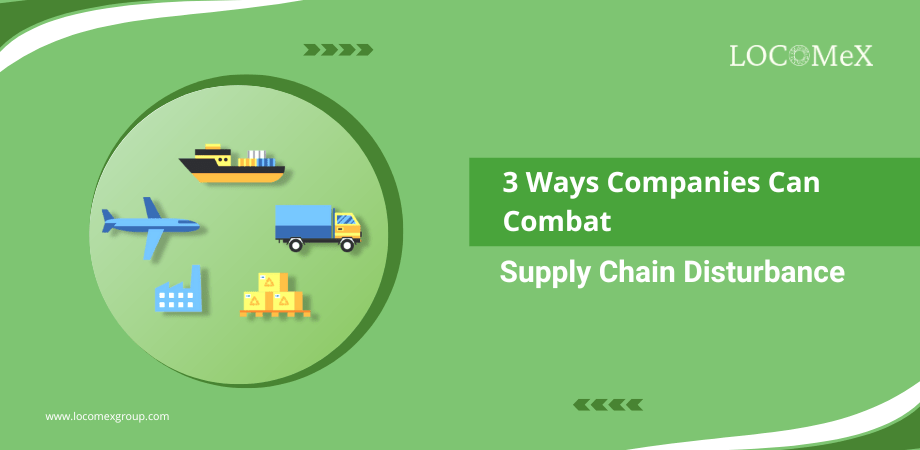152
Supply chain disruption is a common occurrence that can adversely influence businesses of every size. Disruptions can result in delays, stockouts, and financial losses caused by a natural disaster, political unrest, or a global pandemic.
The potential for supply disruptions is greater than ever, thanks to the increasing complexity of supply chains and global interconnectedness. Therefore, businesses must be prepared to deal with supply chain disruption. This article will examine supply chain disruption, its causes, and how to mitigate its effects using three effective supply chain strategies and the best supply chain optimization software.
Supply Chain Disruptions- Definition And Risks
Supply chain disruption refers to the disturbance of the flow of goods or services from suppliers to customers. It can be caused by various internal and external factors that disrupt the supply base. Some common root causes of supply chain risks include:
Internal Factors:
- Poor inventory options: inadequate inventory control and management that leads to stockouts or overstocking.
- Inefficient supply chain processes: poorly optimized and ineffective processes, such as inefficient transportation or poor warehouse management.
- Inadequate communication between suppliers, manufacturers, and customers: poor communication among the supply chain partners and the inability to fulfill customer demand on time can lead to delays, misunderstandings, and even cyber-attacks.
- Quality control issues: defects, errors, or product or service quality failures.
External Factors:
Natural disasters such as earthquakes, hurricanes, and floods are unpredictable and uncontrollable environmental risks that can disrupt the global supply chains by damaging infrastructure, causing delays, or preventing goods from reaching their destination. Other factors include-
- Political instability and conflict: Political instability, such as civil unrest or regime change, can cause disruptions to the supply chain by disrupting transportation routes, creating trade barriers, or causing delays.
- Economic instability and market fluctuations: Economic downturns, inflation, and market fluctuations can disrupt the supply chain by causing demand and supply of raw materials, price volatility, and other financial issues.
- Pandemics or public health crises: Outbreaks of diseases or other public health crises can disrupt the supply chain by limiting workforce availability, causing shutdowns or delays, or increasing demand for certain products or services.
- Trade barriers and tariffs: political decisions such as tariffs or trade barriers can limit the movement of goods and services across borders, causing supply chain disruption and increased business costs.

Three Strategies For Supply Chain Disruption Management
Even though supply chain disruptions can occur unexpectedly and are often beyond a business’s control, it doesn’t mean that such disruptions should result in catastrophic losses. By implementing robust strategies to overcome high demand, businesses can prevent them from happening or mitigate their impact and quickly recover from them.
1. Improve communication and collaboration with suppliers.
Companies should build strong relationships with their suppliers while managing supply chain disruptions. One way to achieve this is by creating a platform or system allowing real-time communication and information sharing between the company and its suppliers. It can help both parties stay informed of changes in demand, production capacity, and price fluctuations, allowing for better customer satisfaction.
Another way to improve communication and collaboration is to identify backup suppliers in the company’s supply chain management strategy. Companies can build more resilient supply chains by working together to identify potential risks and develop contingency plans for better business growth.
Further, companies can work collaboratively to identify different supply chain risks and develop contingency plans. It can involve sharing information about the customer base, available inventory, spare parts, and other available auto parts.
Using reliable supplier diversity program management software can aid as a supply chain risk management tool for your business.
2. Implement supply chain visibility.
Implementing supply chain visibility involves using technology and data analytics to gain insight into every aspect of your supply chain. By tracking and monitoring the movement of goods and materials, you can quickly identify potential disruptions and take proactive measures to mitigate the negative impact.
One important aspect of supply chain visibility is to plan and identify potential disruptions. You can monitor your suppliers, transportation providers, and key stakeholders with real-time data and analytics to identify potential delays, quality problems, or production issues.
In addition to identifying potential disruptions, supply chain visibility can help you take action immediately when disruptions occur. You can quickly reroute shipments, adjust production schedules, or find alternative suppliers by having real-time visibility into your supply chain. It can minimize the impact of disruption on your operations and keep your customers satisfied.
Another important aspect of supply chain visibility is monitoring the performance of your suppliers and other stakeholders. By tracking key performance indicators such as delivery times, quality, and inventory levels, you can identify areas where improvements can be made and work with your partners to address them.
Using good supplier diversity reporting software can help you overcome supply chain disruptions.
3. Empower your data with AI-enabled analytics for supply chains.
In the field of procurement, having accurate and updated data is crucial to gain visibility in the supply chain process. With the available data, it’s easier to predict future disruptions. For this reason, cloud-based procurement solutions are becoming a popular choice for suppliers, and they provide a centralized dashboard that makes data readily available and accessible.
On the contrary, managing large chunks of data can be overwhelming; that’s where Artificial Intelligence (AI) comes into play. With the help of AI-driven data tools helps classify, manage, and label the data, making it easier to overcome supply chain disruptions. It increases your flexibility and expands your supplier options, and frees up your time to focus on deriving insights and making strategic decisions.
With AI handling the heavy lifting of data management, you can gain the insights you need to optimize your supply chain, reduce costs, and improve efficiency. Why not use these tools to help you stay ahead of the curve and succeed in today’s fast-paced business environment?
According to Forbes, the current supply chain disruption is an ongoing challenge, and businesses must acknowledge that disruptions will persist for the foreseeable future.
LOCOMeX: Your Trusted Partner In Supply Chain Resilience
By having proper risk management tools, increasing supply chain visibility, diversifying suppliers, fostering strong supplier relationships, developing backup inventory, and identifying backup suppliers, businesses can stay agile and successfully overcome future supply chain disruptions.
If you’re looking for a reliable team to handle your supply chain works, LOCOMeX is here. Our expert team uses cutting-edge supplier diversity reporting software to provide alternative sources that align with your business operations.
We offer top-of-the-line supply chain optimization software to guide your business through a digital transformation, utilizing Artificial Intelligence powered data-driven tools that connect you with suppliers worldwide. By partnering with LOCOMeX, you can access our innovative optimization tools, including DivedIn, Supplier Pylon, and ESG Metrics Solutions, which can help your organization manage supply chain disruptions.
At LOCOMeX, we’re committed to delivering outstanding supply chain ESG metric solutions that help our clients thrive in today’s socio-economic global events.




